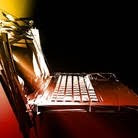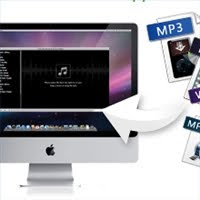
Your press the power button and nothing happens, or worse horrible noises from your PC's internal speaker blast your eardrums with staccato beeps. Your PC has crashed. You say to yourself "Thats ok, I have a backup.. wait.. DO I? NO!! Oh My God What am I going to do!! My documents, pictures, old emails! Oh No.
Ok - Calm down. I've done this for so long I know every emotion that is racing through your head. To give you some assurance, YES, in MOST situations we can get your data back for you. In some of the worst case scenarios - no. What this article will do is help you take the PROPER steps yourself to get back at your data from there you can decide what else to do. SO, FIRST ~ take a deep breath (Im serious)..take another. Relax. You do NOT want to go into a procedure all flipped out. If you have to go outside and get some air do it. Trust me, I've been an IT Professional for over 20 years, been there done that.
Now that you are calmed down a little, lets get to work ok?
This article can apply to a business workstation scenario too. I will be writing an article on how to recover servers soon.
Instructions
Things You'll Need:
- Various items
- Another hard disk (any size over 10 gigs)
- Preferably another PC - even an older desktop
- A SATA/IDE adapter ($12-$20) is the most preferred if you have it.
- Jump/Thumb drive 4 gig or larger.
-
Step 1
If you are here its not been a good day for you, dont worry - we'll do what we can to save your data. Its going to depend GREATLY on what other tools you have available. If you have ANOTHER Desktop PC, even an old one (NOT Windows ME, 98, 95 version tho). We will do it like this. If you have an old Windows XP Desktop in the closet Go to STEP 2. If you have another computer thats a Laptop then go to STEP 3. If you dont have ANY other computer handy go to STEP 4.
If you dont know what a hard drive looks like, look at the picture on Step 2. That is a typical 3.5 inch hard drive used in Desktop PC's.
-
Step 2

Drive jumper selection
YOU HAVE AN OLD Windows XP computer to help you for this Step. GOOD. Get the old computer out and hook up the monitor, keyboard, Mouse & power. Forget the internet. Power it up. Get the PC on and LOG INTO IT. If you cant log into it thats another thing GO to STEP 5 if you cant remember you old password on this machine. Now if you can log into it - GOOD! Power DOWN. Open the case of your crashed PC. Remove your primary or boot hard drive (some PC's have more than one). Now open the case to the OLD PC and look at the IDE Hard drive cables. One will go to your hard drive, the other to your CD (usually). If only one cable is present disconnect the CD to put you Crashed drive there. One note, look at the little pins on the hard drive and make a note of the jumper positon and make sure the jumper is moved to "CS" or "SLAVE".
If it has two IDE cables, unhook the CD cable (single) and put your Crashed drive on that. Now, power up your old PC. Most motherboards are defaulted to auto identify new drives. Log onto the PC. Open windows explorer and see if you now see two hard drives - C and usually D. If you do.. your old data is there! Now you have to get to it. You can do a search for your pictures, files (music) etc. If you old drive is not large enough to copy these over, you may need to go buy a jump drive with sufficient space to copy them or get your hands on an external USB hard disk. You could get creative and install a CD Burner in the old PC (the one already in it could be) and burn your files to CD-R (fastest). Emails file extension are .eml, look for those. Dont have or cant get all this? Then try to get your internet connection working on the old PC. Once thats done find one of those FREE ONLINE BACKUP providers and start loading your stuff up there. You can copy it back down once your OLD PC is back up. Go to Step 5
-
Step 3

IDE/SATA USB Adapter
YOU HAVE A LAPTOP Besides your crashed PC. This will be more tricky and will take a little more time but its easy. For this step you will have to go to Best Buy or another technology store for an IDE/SATA USB ADAPTER. Call ahead of time so you wont waste gas. They run about $20.00 (I ordered mine online for $12.00). Now with the SATA/IDE Adapter in your possession and INSTALLED (Drivers) on your laptop.. Take out the HARD DRIVE from your crashed Desktop PC. Plug the power cable of the USB Adapter into hard drive. Now CAREFULLY match up the LARGE pin side of the adapter (look at the slot) and plug it onto it. Now plug the Adapters USB cable into your laptop. WAIT. It sometimes takes even up to a minute for your system to identify a IDE hard drive. Dont worry, you'll see the notifications down on the taskbar. Add/remove hardware wizzard will notify you when it finds it. Once it says the hardware is Ready for Use, open Windows Explorer and look for the newly added drive. Hopefully you have space on your Laptops hard drive for all of your old Pictures, files and music & emails etc. If not get a USB Jump drive while at Best Buy too to copy them over. You can also find one of those FREE ONLINE BACKUP providers and back up your old drive to that. Make sure you do a search for .eml (email files) too and copy those too. Go to Step 5.
-
Step 4
YOU HAVE NO OTHER COMPUTER TO USE. This makes recovery more difficult but not impossible. First, call around to your friends and see if they are willing to help you if you bring your old hard drive over to put as a slave on their PC (STEP 2). If not then you are going to have to MANUALLY recover your PC's OS to get at your files again and start over. I cannot go into each and every manufacturers reinstallation. However, I will give you the highlights and warning signs to watch out for. Note that with this step, you WILL loose browser favorites,
Before you whack your current Operating System, try to find out what error you are seeing and ask a friend to Google it. Maybe there are some other alternative by what you find online. One last little trick you can do is this. Restart your PC. At the POST (when your computer starts) look for "Hit F (whatever) to enter Setup" or "F2 - Setup".. it could be F10 or the "Delete" key. Get into your BIOS. Look for "Load Setup defaults" or "Load Fail-safe configuration". and then SAVE those settings and exit. Try to reboot. I've seen BIOS issues cause crashes before. Just an option to try before going critical mass.
Once you have started a recovery of your Operating System (with manufacturers OS CD) when it gets to the part about "Formatting" the drive - say NO!! Select "Leave current file System Intact". You can choose "Overwrite Current Operating System" if that choice is asked. Let the installation run to its conclusion after this. Reboot. Now you may have to load drivers for many of your devices, Network card, video cards etc. They usually come in a 2nd CD. If you are out of luck there then you will need to obtain them somehow by getting online somewhere and dowloading the proper drivers. Dell, HP, Gateway all have utilities where you can put in your computers ID, Serial number, Asset tag etc and get all the information about your pc when it was built! If not you may have to buy a new NIC or video card if you cant tell by looking at them (physically) and seeing what make/model they are. You can use a Jump drive (invaluable) if you have to go to a library computer to download them.
-
Step 5
Recovering a crashed Operating System presents SO MANY different scenario's its impossible to cover all eventualities. I've tried to give as concise a plan to recover as I possibly could understanding that some problems could easily present themselves to you that may not be covered. In any case, if you have been thwarted at every turn in recovering your data and have NOT suceeded - all is NOT lost. You can STILL contact a professional and get their assistance. It might cost you a little money ($35-$75 or more) but a Professional knows the pitfalls and has all the tools and abilities that years of experience have taught them. This article assumes you have a good working knowledge of PC's and can figure out "next steps" logically also.
What is crucial above ALL ELSE is this - Why were you NOT backing up? Lessons learned painfully are not forgotten easily. Figure out a way to backup your important data. DO NOT PROCRASTINATE! Even those Free Online backup Providers are a life saver if you've taken the time to use them! My next article will be "Backup Strategies" - LOOK for it under my profile! (Ill get to it asap!)





